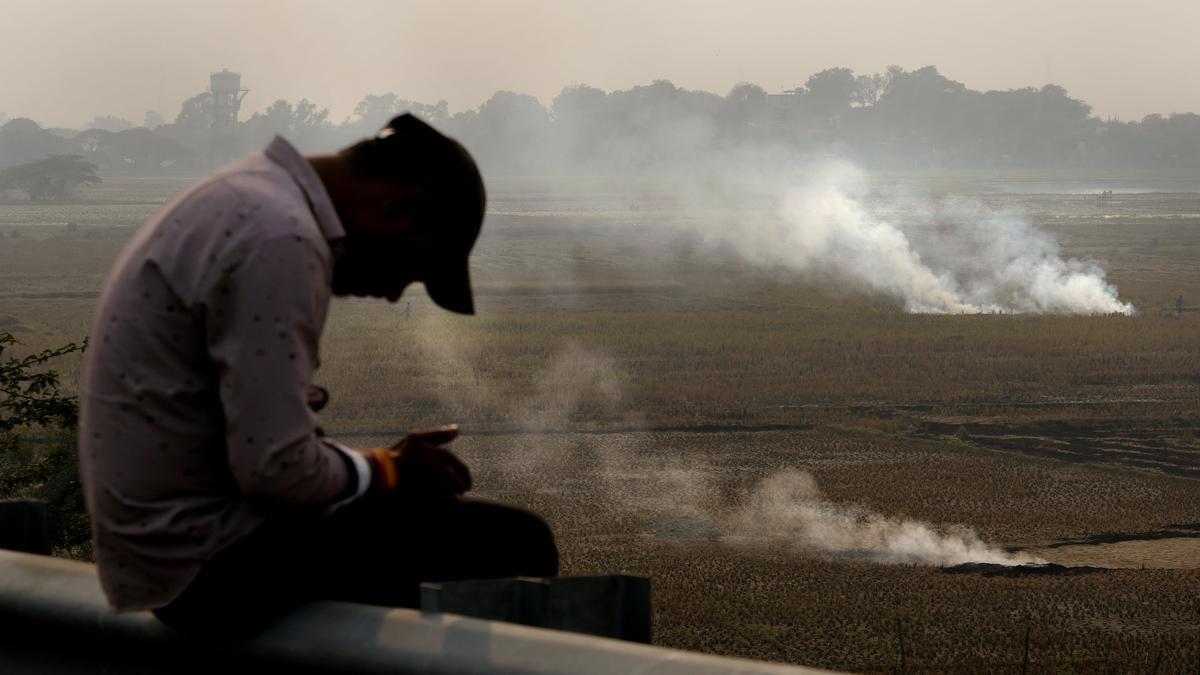Finance is a significant issue in climate negotiations, as developing countries insist that developed countries pay the costs of adaptation (to deal with climate change impacts). File
| Photo Credit: AP
To adapt to climate change, developing countries will require anywhere from $310-365 billion (at least ₹27 lakh crore) annually by 2035, according to a United Nations analysis. This is nearly 12 times more than the money that currently flows from the developed to the developing world for this purpose.
The analysis, underlining the huge gap between the demand and supply of funds needed to protect developing nations from climate change impacts, appears in Running on Empty, an annual report on the shortfall released on Wednesday (October 29, 2025), ahead of the 30th edition of the UN Framework Convention on Climate Change Conference of Parties (COP-30) to be held in Belem, Brazil next month.
International public adaptation finance flows to developing countries stood at $26 billion (about ₹2.2 lakh crore) in 2023, down from $28 billion the previous year. If these trends continue, a target agreed upon by countries at the COP-26 in Glasgow, to double adaptation finance to $40 billion by 2025 will be “missed,” the report added.

Disappointing target
Finance is a significant issue in climate negotiations, as developing countries insist that developed countries pay the costs of adaptation (to deal with climate change impacts) and mitigation (to move away from fossil fuels), as well as compensation for losses and damages already occurring. This total bill is collectively called ‘climate finance.’
At COP-29 in Baku, Azerbaijan last year, developing countries, which were demanding nearly $1.3 trillion annually by 2035, were disappointed when the developed world agreed to only $300 billion, called the New Collective Quantified Goal (NCQG) on climate finance. Though this is thrice the $100 billion target that was to be met by 2025, critics say this number does not account for future inflation or specify how much is meant for adaptation needs.
Tuesday’s (October 28) UN report underlines this criticism. “…it is far too evident that the financial resources needed to enable adaptation action in developing countries at the scale necessary to meet the growing challenges of current and future climate risks is woefully inadequate. It will take nothing less than a global collective effort to increase climate finance to the levels articulated in the Baku to Belém Roadmap to 1.3 trillion,” it notes

Increasing debt
The report also raises concerns that whatever money has been made available at present is primarily classified as ‘debt.’ Although 70% of international public adaptation finance was concessional in 2022-2023, it is “worrisome” that debt instruments continue to dominate these overall flows, comprising 58% on average in that financial year, the report said.
The increasing proportion of expensive debt instruments “raised concerns” about long-term affordability, equity, and the risk of an ‘adaptation investment trap’ where rising climate disasters increase indebtedness and make it harder for countries to invest in adaptation. “This is particularly true for vulnerable countries, especially LDCs (least developed countries) and SIDS (small island developing countries), which have contributed very little to the climate crisis but suffer the most from its effects. Further, non-concessional loans exceeded concessional ones, albeit so far predominantly to middle-income countries,” the report added.
Also read:Climate change is changing where and how Indians are living
‘Death sentence’
“This report confirms a staggering betrayal. The adaptation finance gap is a death sentence for communities on the frontline. For decades, the developing world has been told to prepare for a crisis they didn’t cause. They have done their homework—172 countries now have adaptation plans—but rich nations have offered only lip service, with finance flows decreasing last year,” Harjeet Singh, climate activist and the founding director of Satat Sampada Climate Foundation, said in a statement.
“This monumental gap—now at least 12 times what is provided—is the direct cause of lost lives, destroyed homes, and shattered livelihoods. This is a deliberate political choice by rich countries to abandon the developing world to climate impacts they had no role in causing. It is the very definition of climate injustice,” he added.
Published – October 29, 2025 09:16 pm IST
